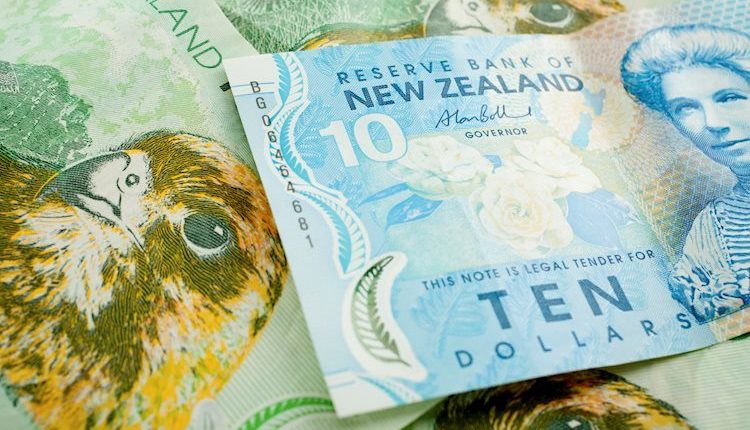- NZD/USD trades with mild gains around 0.5900 in Thursday’s early Asian session.
- The cautious stance from the Fed on further rate cuts might lift the US Dollar.
- The speculations about a potential 10% tariff on Chinese goods could weigh on the Kiwi.
The NZD/USD pair gains traction to around 0.5900 during the Asian trading hours on Thursday, bolstered by the weaker US Dollar (USD). The Greenback edges lower due to the month-end flows and some profit-taking for the US long weekend. The US markets will be closed on Thursday in observance of the Thanksgiving holiday.
However, the downside for the Greenback might be limited amid the expectation of a less aggressive rate cut by the Federal Reserve (Fed). The signal of stalled inflation progress hinted that the Fed might be cautious about further rate cuts.
The US Personal Consumption Expenditures (PCE) Price Index rose 2.3% YoY in October, compared to a 2.1% increase in September, the US Bureau of Economic Analysis (BEA) reported on Wednesday. The core PCE Price Index, which excludes volatile food and energy prices, climbed 2.8% in the same period, up from 2.7% in September. Both figures came in line with the market consensus.
“This paves the way for a 25 basis point cut in December and then probably a pause. But the pause won’t likely be due to inflation data, but because of uncertainties over Trump’s tariffs. I think the Fed will grow cautious,” noted Peter Cardillo, chief market economist at Spartan Capital Securities in New York.
On Wednesday, the Reserve Bank of New Zealand (RBNZ) decided to cut its Official Cash Rate (OCR) by 50 basis points (bps) from 4.75% to 4.25% in the November meeting. RBNZ Governor Adrian Orr noted during the press conference that the forecasts align with a potential 50 bps reduction in February 2025, contingent on economic activity. He further stated that domestic inflation pressures would continue to ease. In the meantime, the recent tariff threats from US President-elect Donald Trump could exert some selling pressure on the Kiwi as China has been the largest trading partner of New Zealand.
New Zealand Dollar FAQs
The New Zealand Dollar (NZD), also known as the Kiwi, is a well-known traded currency among investors. Its value is broadly determined by the health of the New Zealand economy and the country’s central bank policy. Still, there are some unique particularities that also can make NZD move. The performance of the Chinese economy tends to move the Kiwi because China is New Zealand’s biggest trading partner. Bad news for the Chinese economy likely means less New Zealand exports to the country, hitting the economy and thus its currency. Another factor moving NZD is dairy prices as the dairy industry is New Zealand’s main export. High dairy prices boost export income, contributing positively to the economy and thus to the NZD.
The Reserve Bank of New Zealand (RBNZ) aims to achieve and maintain an inflation rate between 1% and 3% over the medium term, with a focus to keep it near the 2% mid-point. To this end, the bank sets an appropriate level of interest rates. When inflation is too high, the RBNZ will increase interest rates to cool the economy, but the move will also make bond yields higher, increasing investors’ appeal to invest in the country and thus boosting NZD. On the contrary, lower interest rates tend to weaken NZD. The so-called rate differential, or how rates in New Zealand are or are expected to be compared to the ones set by the US Federal Reserve, can also play a key role in moving the NZD/USD pair.
Macroeconomic data releases in New Zealand are key to assess the state of the economy and can impact the New Zealand Dollar’s (NZD) valuation. A strong economy, based on high economic growth, low unemployment and high confidence is good for NZD. High economic growth attracts foreign investment and may encourage the Reserve Bank of New Zealand to increase interest rates, if this economic strength comes together with elevated inflation. Conversely, if economic data is weak, NZD is likely to depreciate.
The New Zealand Dollar (NZD) tends to strengthen during risk-on periods, or when investors perceive that broader market risks are low and are optimistic about growth. This tends to lead to a more favorable outlook for commodities and so-called ‘commodity currencies’ such as the Kiwi. Conversely, NZD tends to weaken at times of market turbulence or economic uncertainty as investors tend to sell higher-risk assets and flee to the more-stable safe havens.
Read the full article here

